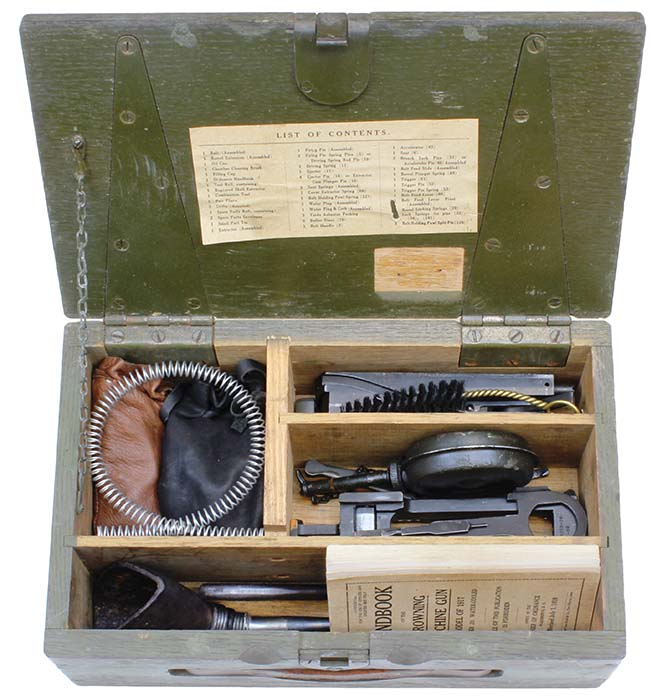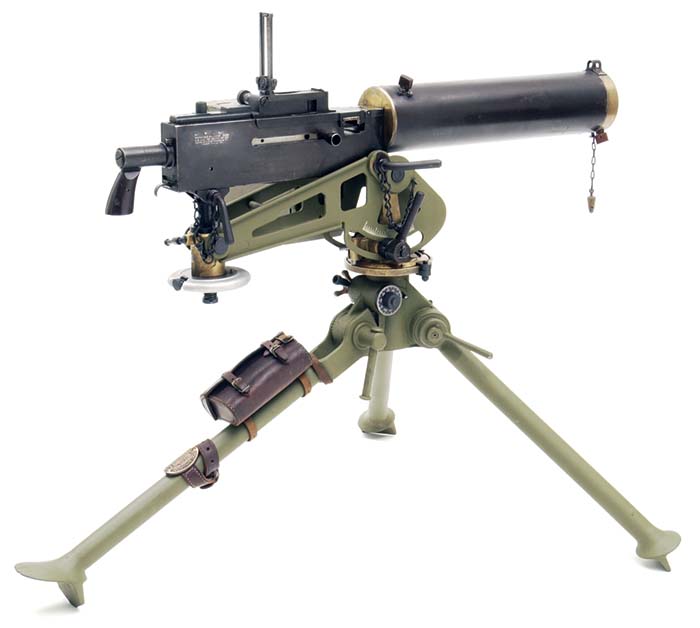Browning Model of 1917 water-cooled machine gun.
By Robert G. Segel
The Browning series of .30 caliber water-cooled machine guns (the Model of 1917 and the later upgraded M1917A1) served the U.S. armed forces for over 4 decades beginning in World War I with the Model of 1917.
The battlefields of France quickly demonstrated the need for a kit to accompany each gun in the field to provide certain key spare parts that would need replacing due to wear or battle damage and tools to keep the guns operating. A wooden box the same size and dimensions as the ammunition boxes was developed to provide the necessary parts and tools to the gunners in the field. It is top opening with a spring loaded brass closure mechanism and has a leather handle. There is a light blue stripe painted around the box to denote it as the spare-parts box and differentiate it from an ammunition box.

This early box was used throughout World War I and in the immediate post-war years until replaced with canvas spare parts and tool rolls that followed later.
There is a parts list of the contents of the box pasted inside the top lid. In this author’s opinion, it is a “suggested” list as there are parts listed that do not normally wear or break and there are parts that are not listed that do and should be listed. Additionally, there is no record in any manuals as to how the box should be packed. It seems that was pretty much left up to the individual soldier as long as the box contained the
necessary parts and tools.

The spare-parts box is intended to provide the gun squad with immediate replacement of serviceable parts for those which become defective in the gun in use. It should, therefore, be kept complete at all times with its contents in good condition and whenever a part is taken from the box to replace a defective part in the gun, a notation should be made in the gun record and the defective part repaired or a new one substituted in the spare-parts box as soon as possible.

| This article first appeared in Small Arms Review V19N9 (November 2015) |











